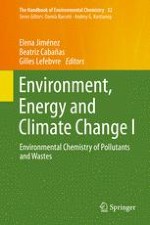2015 | OriginalPaper | Buchkapitel
Sustainable Polyurethanes: Chemical Recycling to Get It
verfasst von : D. Simón, A. M. Borreguero, A. de Lucas, C. Gutiérrez, J. F. Rodríguez
Erschienen in: Environment, Energy and Climate Change I
Aktivieren Sie unsere intelligente Suche, um passende Fachinhalte oder Patente zu finden.
Wählen Sie Textabschnitte aus um mit Künstlicher Intelligenz passenden Patente zu finden. powered by
Markieren Sie Textabschnitte, um KI-gestützt weitere passende Inhalte zu finden. powered by
